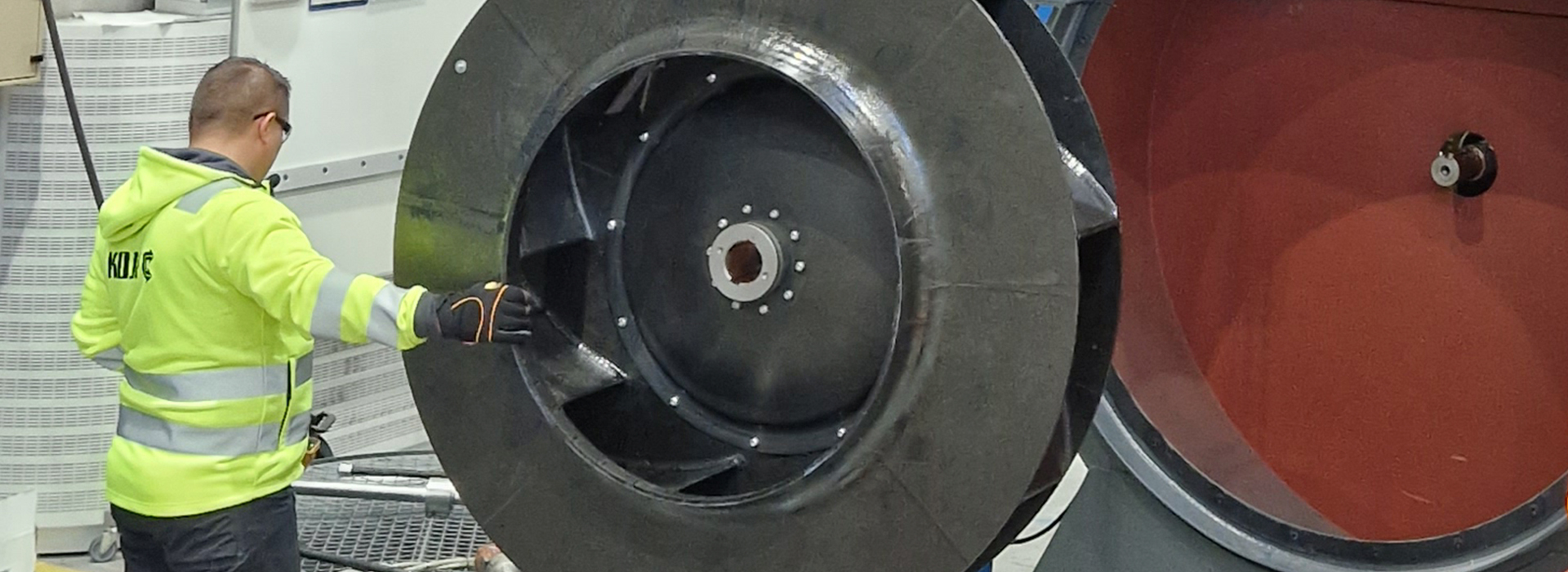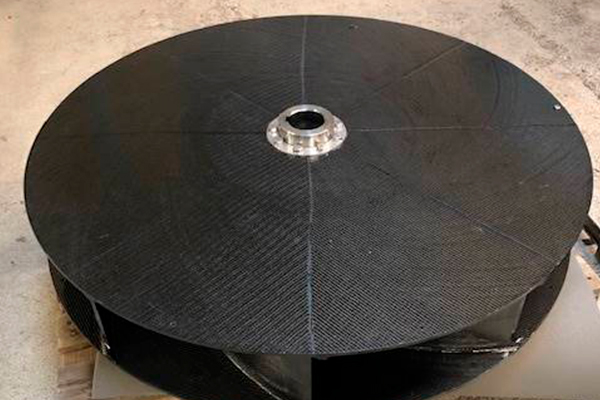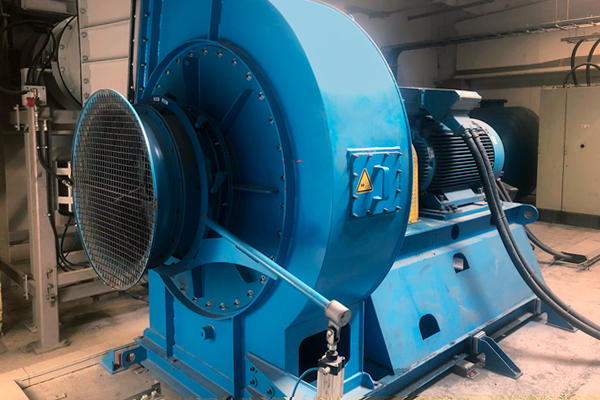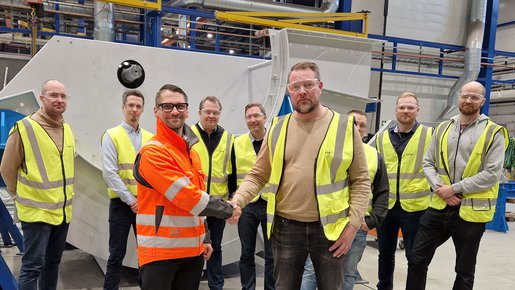24.05.2024

New material technology brings safety and energy efficiency to Pilkington Automotive’s glassworks
Koja’s new innovation, a carbon fiber impeller immune to structural fatigue, was put to the test by Pilkington Automotive Finland Oy on their glass tempering line. The new impellers are expected to reduce fan breakages and increase the safety and energy efficiency of the tempering process.
“The improved energy efficiency and durability of the carbon-fiber impeller are certain to bring savings. Steel impellers had a service life of five to seven years and, if broken, caused an unplanned shutdown lasting several days, the cost of which was easily many times that of replacing the impeller. In addition, in the event of damage, the carbon-fiber impeller does not pose the same kind of immediate hazard as its steel counterpart,” says Marko Salonen, project manager at Pilkington Automotive Finland.
The way carbon fiber impellers are designed improves their efficiency compared to steel impellers. Typically, the glass production line’s tempering phase lasts 10–20 seconds at a time. The cycle time is often up to two minutes, and for the rest of the time the fan sits idle, waiting for the next batch. While the next batch is heated in the furnace, the fan’s speed is reduced to about 70 percent of its maximum. The blades experience heavy tension during tempering, and at least a minimum of tension is maintained during idle to protect the impeller – if its speed is too low, tension is lost, and the fluctuations will shorten the service life of the impeller.
“Unlike steel impellers, the carbon fiber impeller is immune to tension fluctuations and its service life is not shortened even if tension is lost periodically. In addition, the structure is so light that acceleration takes mere seconds. When a batch of glass arrives from the furnace to the tempering section, the fan can be accelerated quickly, the glass tempered and the wheel left to spin freely at the end,” says Vesa Aalto, business area manager at Koja Industrial Solutions.
Koja proposed a pilot
Pilkington Automotive Finland is part of the Japanese NSG Group, one of the world’s leading producers of glass and glass products. The group’s specialty vehicle glass business is concentrated in Finland. This includes tempered and laminated safety glass for agricultural machines, buses and boats. The tempered safety glass products are manufactured in Tampere and the laminated safety glass products in Laitila. Pilkington’s Myllypuro plant in Tampere has six pretreatment lines and ten tempering lines. It also has dedicated lines for insulation glass element assembly and component gluing.
Koja and Pilkington have a long history of cooperation. Koja has been in close contact with Pilkington, participated in annual maintenance and inspections, delivered spare parts and carried out upgrade projects. As Pilkington has previously suffered from fan breakdowns, Koja came up with the idea to pilot new technology.
“Tempering is one of the most demanding applications for fans due to its cyclical nature, which causes fatigue in steel impellers. Our new innovation can withstand extreme tension and is a safe and energy-efficient alternative, which Pilkington found interesting,” says Aalto.
The impellers were manufactured and installed by Koja. During installation, the inlet cone, inlet guide vane and inlet section were removed from the inlet side of the fan. The steel impeller was then pulled off the shaft and a carbon-fiber impeller of a matching size was installed in its place. The other parts were reinstalled in reverse order and a test run of the fan was carried out.
“The installation of the carbon fiber impeller was very quick, and it could be installed during our downtime, leaving production unaffected. Koja handled the installation, and the factory was mostly responsible for moving the impeller from the loading bay to the machine,” says Salonen.
Benefits set to multiply in the near future
During the operational monitoring of the impeller after installation, it was found that efficiency had improved immediately. The energy savings were maximized by changing the settings to match the impeller’s current rate of use.
“In addition to a fan, Pilkington has had to rely on a parallel air boost compressor system for the thinnest product, which is the most demanding for the fan. After the CFI [carbon fiber impeller] upgrade, the fan’s efficiency improved so much that the compressor system, which is very expensive in terms of energy consumption, became wholly unnecessary for some products, and the project’s calculated payback period was reduced to less than one year due to these factors. We are planning to operate this line in two or three shifts, at which time the benefits will be multiplied,” says Aalto.
A successful and educational project
The project was of great importance for Pilkington but also for Koja, as it involved piloting new material technology. The project demonstrated that the carbon fiber impeller tolerates cyclical use and demanding operating environments very well. The energy savings from just the improvement in efficiency were a positive surprise. One future consideration is that automation systems also have a life cycle: even if the impeller can be driven cyclically, the automation system may not be able to fully support that.
Currently, Koja and Pilkington are engaged in a condition project for the new glass line’s furnace room, and other cooperation projects have already been planned. The annual shutdown will take place during the summer for fan maintenance and inspections.
“We at Koja wish to thank Pilkington very much for their trust in our new technology and for the smooth execution of the project. Our cooperation has always been natural and fast-moving. We are looking forward to future projects,” says Aalto.
“Ultimately, the impeller replacement project went very well. The installation did not interfere with production, and we immediately gained a little more capacity for tempering. Despite fluctuations in electricity prices, it appears payback will occur as planned. This project showed trying new things is worthwhile, as long as the basics are solid,” says Salonen.


